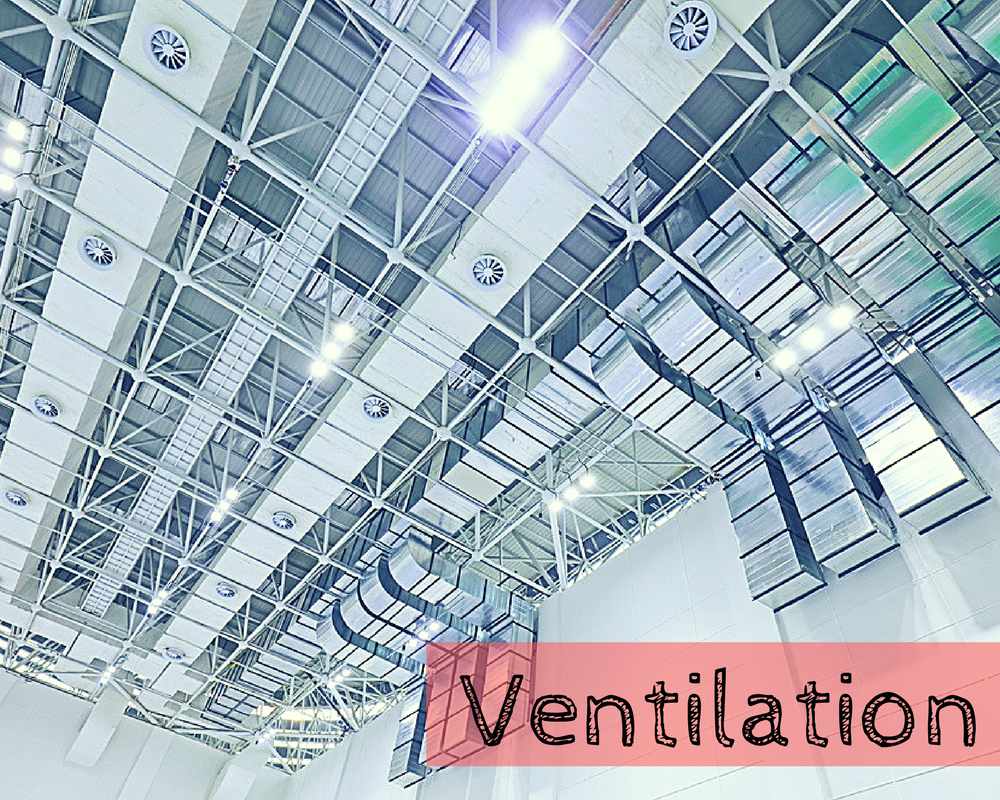Energy efficient ventilation solutions for schools and large buildings

Ventilation is the process where the clean and fresh air is intentionally supplied to an indoor space, and stale or polluted air is removed. Ventilation can be achieved in three ways: natural ventilation, spot ventilation, and whole-house ventilation.
Natural ventilation refers to the uncontrolled air movement in and out the windows, doors, cracks, and holes in a home.
Spot ventilation, on the other hand, adds efficiency to natural ventilation by removing indoor air pollution at the source. It is commonly done through the use of exhaust fans.
Whole-house ventilation provides controlled, uniform ventilation throughout a home or a building. This system uses fans and duct systems to exhaust stale air and to supply fresh air inside the home or building.
The importance of proper ventilation
A study found that children breathe a greater volume of air compared to adults, and are more sensitive to indoor air pollution. Because of this, proper ventilation of school buildings is an important matter. School buildings also have higher occupant density compared to ordinary office buildings. The school’s physical environment can affect a child’s educational progress. Improving air quality can provide an improvement to student performance.
According to the Australian Sustainable Schools Initiative, sustainable schools are increasing in number across the country. The movement is designed to encourage and spread awareness on renewable and sustainable energy among the students, their families, and the surrounding communities.
 Ways to achieve energy efficient ventilation in schools and buildings
Ways to achieve energy efficient ventilation in schools and buildings
Below are energy efficient methods and solutions that can be adapted to ventilate schools, as well as other large buildings.
-
Ensure that the building envelope promotes a cooler environment.
The walls, foundation, roof and windows of a building make up the building envelope. Their insulating properties contribute to the way heat and moisture flow into and out of the building. The colour, for example, of your walls and roofs affects the way heat is absorbed, and how the building radiates heat back to the atmosphere. Statistically positioned windows can promote movement of fresh air into the building, and ridge vents can push out stale air.
-
Reduce leaks in building ducts.
To reduce energy loss in ventilation systems, ensure that pipes and ducts are all sealed. Regular check-up for leaks is advised. Air pollutants can also be drawn into the school building through these unwanted openings.
-
Practice night pre-cooling.
The evening air is significantly cooler than daytime air. Letting the evening air in cools the interiors of a building, while letting accumulated indoor pollutants out. It is one of the cheapest ways to promote proper ventilation of fresh air in large buildings, especially during summer days.
-
Invest in window fans.
Fans can help increase natural airflow and when paired with an open window can be more effective to promote and improve air ventilation. Fans are cheap, and do not consume much power.
-
Cover the school grounds with grass and surround the campus with trees.
Not only are they beautiful and can add to the school campus aesthetics, grass and trees help direct cool air into the building too. Tall trees also protect the building from direct sunlight, thus protecting it from the harsh heat of the sun.
-
Ensure that the air conditioning system is in prime condition.
If the school building has an air conditioning system, make sure that there are no leaks. The filters should also be clean and in their best condition. Problems can add to energy loss, and increase the energy consumption of the building. It is also helpful to reduce the air conditioner’s operating hours, like shutting down the system late in the day before the occupants leave. To ensure adequate ventilation, keep the fans operating after the air conditioning system has been turned off.
-
Invest in an energy recovery ventilation system.
An energy recovery ventilation system can provide controlled ventilation, and at the same time, minimise energy loss. During hot days, the inside air cools the warmer supply air to reduce energy costs for cooling the building. During winter, it transfers heat from the warmer inside air being exhausted to the fresh and cold supply air from the outside.
- Leave your ventilation problems to the experts.
If you would like your building interior air to be fresh, clean, and cool, while making it energy efficient, it is beneficial to seek the help of experts. Contractors like Global Home Solutions provide you with end to end support – from a free assessment of your building to the installation of the right ventilation system for your building’s needs.
Nurture the children’s education and future by ensuring that they are comfortable and are breathing fresh and clean air. Contact the team at Global Home Solutions at your convenience.
